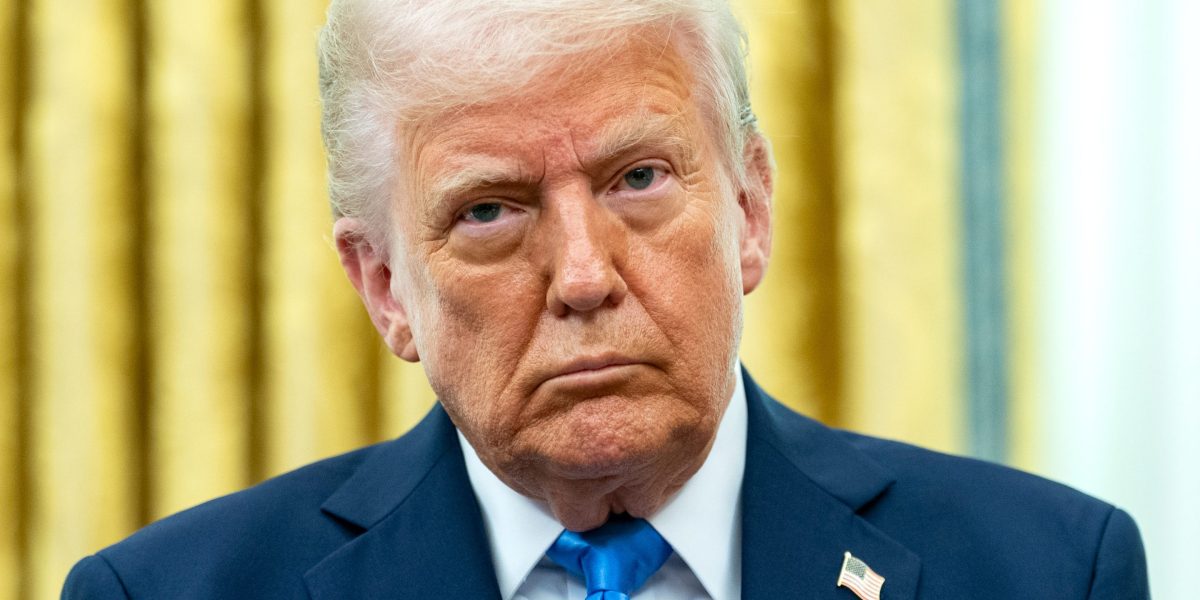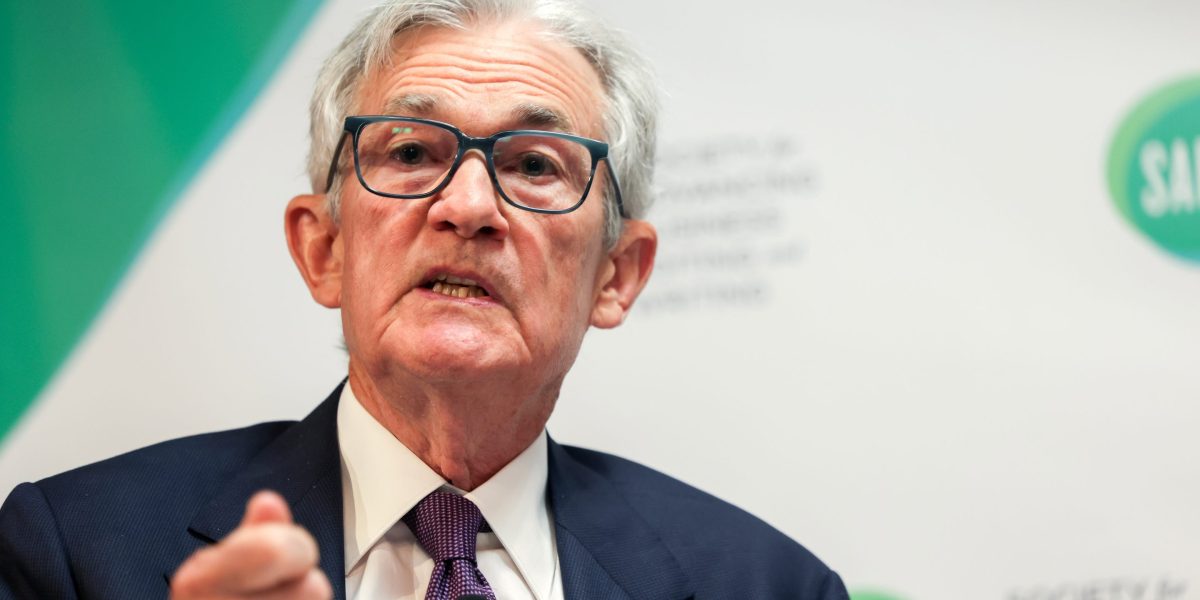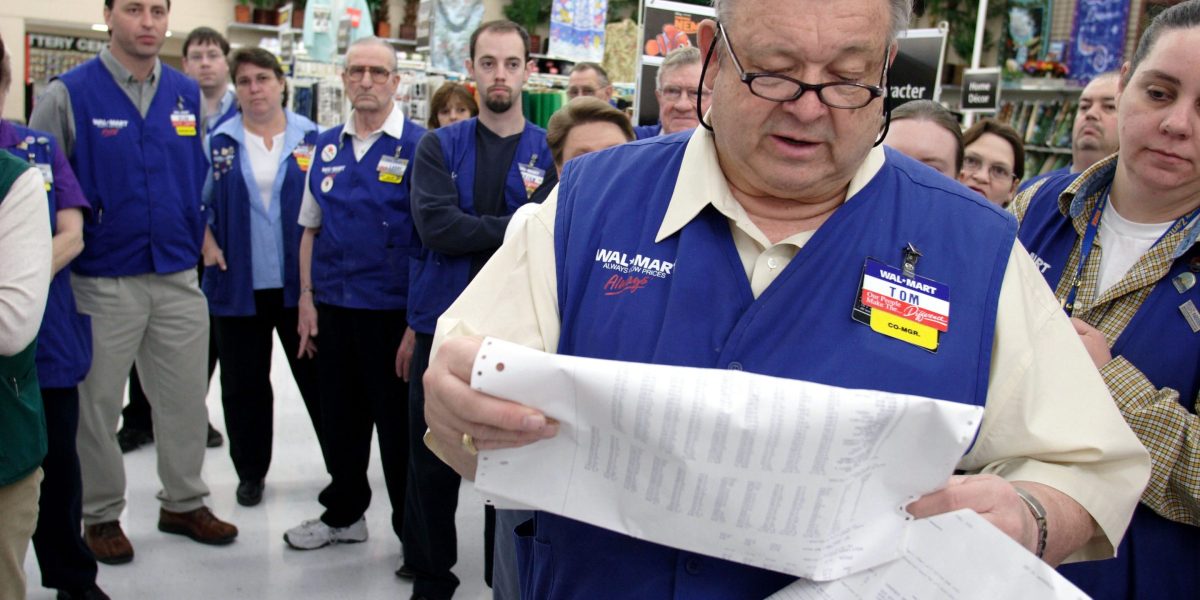- Fears of stagflation are rising as President Trump prepares to implement new tariffs, worsening trade tensions and potentially slowing economic growth while inflation ticks higher. Analysts and economists, including those from Deutsche Bank and Goldman Sachs, warn of weakening economic indicators, higher inflation expectations, and an increased risk of recession, prompting speculation that the Federal Reserve may sit tight on rate cuts until it has more data.
As the clock ticks down to President Trump’s ‘Liberation Day’,fears of stagflation—sluggish growth with rising prices—are only mounting.
The White House has done little to soften the blow of an escalating trade war between Uncle Sam and some of its closest economic allies. In fact, President Trump has hinted “all countries” will face a hike in duties coming into effect immediately.
And while there will be time for negotiation—something White House press secretary Karoline Leavitt has already confirmed—that will do little to mitigate the initial shockwaves rippling through global markets.
The dreary outlook is pushing analysts to take a more bearish stance on the U.S. economy in the shorter term.
Data suggesting rising inflation fears combined with hallmarks of a slowing economy—and that’s before President Trump’s Rose Garden announcement later today—is already leading many economists to expect stagflation.
In a morning note seen by Fortune, Deutsche Bank‘s Jim Reid wrote recent batches of U.S. data had fallen below expectations, “exacerbating” concern over stagflation.
For example, the Institute of Supply Management (ISM) measures manufacturing activity across 400 industrial companies to produce its Manufacturing Purchasing Managers Index (PMI) report.
An index reading above 50 suggests expansion, a reading below suggests contraction. The latest PMI report released yesterday showed a reading of 49.0—even lower than the 49.5 expected.
The most notable drop in the index was from imports. While the reading for March was still 50.1%—scraping into ‘growth’ territory—it still saw a 2.5% drop-off compared to the month prior, suggesting slowing activity.
“The weaker ISM release saw the Atlanta Fed’s GDPNow Q1 estimate…fall to a new low of -1.4%, while the model’s estimate of real private domestic final sales, which are much less distorted by trade volatility, fell to a still positive but weak +0.4%,” Reid added.
“The data is continuing to support the narrative of weaker growth and higher inflation, with market-based inflation expectations continuing to rise.”
Inflation expectations are similarly tipping higher, led by consumers but leading some experts to fear if markets will follow suit.
The Federal Reserve Bank of New York, for example, found in its latest report that consumers’ inflation expectations for the next year sat at 3.1%—up by 0.1% on the month prior—and 3% over the next three to five years.
And while a regional federal bank president has warned the market against increasing their inflation expectations too steeply, the likes of Goldman Sachs have adjusted their expectation towards a more stagflationary environment.
Goldman economist David Mericle wrote on Monday that the financial giant had raised its core inflation expectation by 0.5pp to 3.5% by the end of 2025, and lowered its growth forecast by 0.5pp to 1%.
He added: “We raised our unemployment rate forecast by 0.3pp to 4.5% at end-2025 to reflect weaker GDP growth and the effects of federal spending cuts and layoffs.
“We raised our 12-month recession probability from 20% to 35%, reflecting our lower growth forecast, falling confidence, and statements from White House officials indicating willingness to tolerate economic pain.”
Slowing the course of the Fed
Meanwhile economist Claudia Sahm, who created the eponymous recession indicator, said she is identifying “whiffs” of stagflation concern in Fed data.
Pointing to Federal Reserve charts—which show growth flatlining and inflation charting higher than its downward trend over the past few years—Sahm wrote: “My ‘whiff’ characterization reflects the relatively modest hit to growth and boost to inflation this year, as well as the quick, low-pain return to disinflation next year. These are not stagflation forecasts, but they are a shift.”
Indications of potential stagflation are not the same as operating under these economic conditions, she added, highlighting Chicago Fed President Austan Goolsbee’s point that inflation still sits around 2% and unemployment remains stable.
She concluded: “The smell of stagflation—higher inflation and lower growth—is noticeable in the Fed communications, especially when discussing the risks to the outlook.
“Tariff-induced inflation has a better chance of being ‘transitory’ since the demand destruction from lower real incomes should blunt some of the inflation. That’s little comfort. Stagflation, even if modest, would be costly.
“High uncertainty, unbalanced risks, and stagflationary impulses are more than enough to keep the Fed on hold.”
This story was originally featured on Fortune.com
Source link


 Entertainment8 years ago
Entertainment8 years ago
 Politics8 years ago
Politics8 years ago
 Entertainment8 years ago
Entertainment8 years ago
 Entertainment8 years ago
Entertainment8 years ago
 Tech8 years ago
Tech8 years ago
 Tech8 years ago
Tech8 years ago
 Tech8 years ago
Tech8 years ago
 Politics8 years ago
Politics8 years ago






